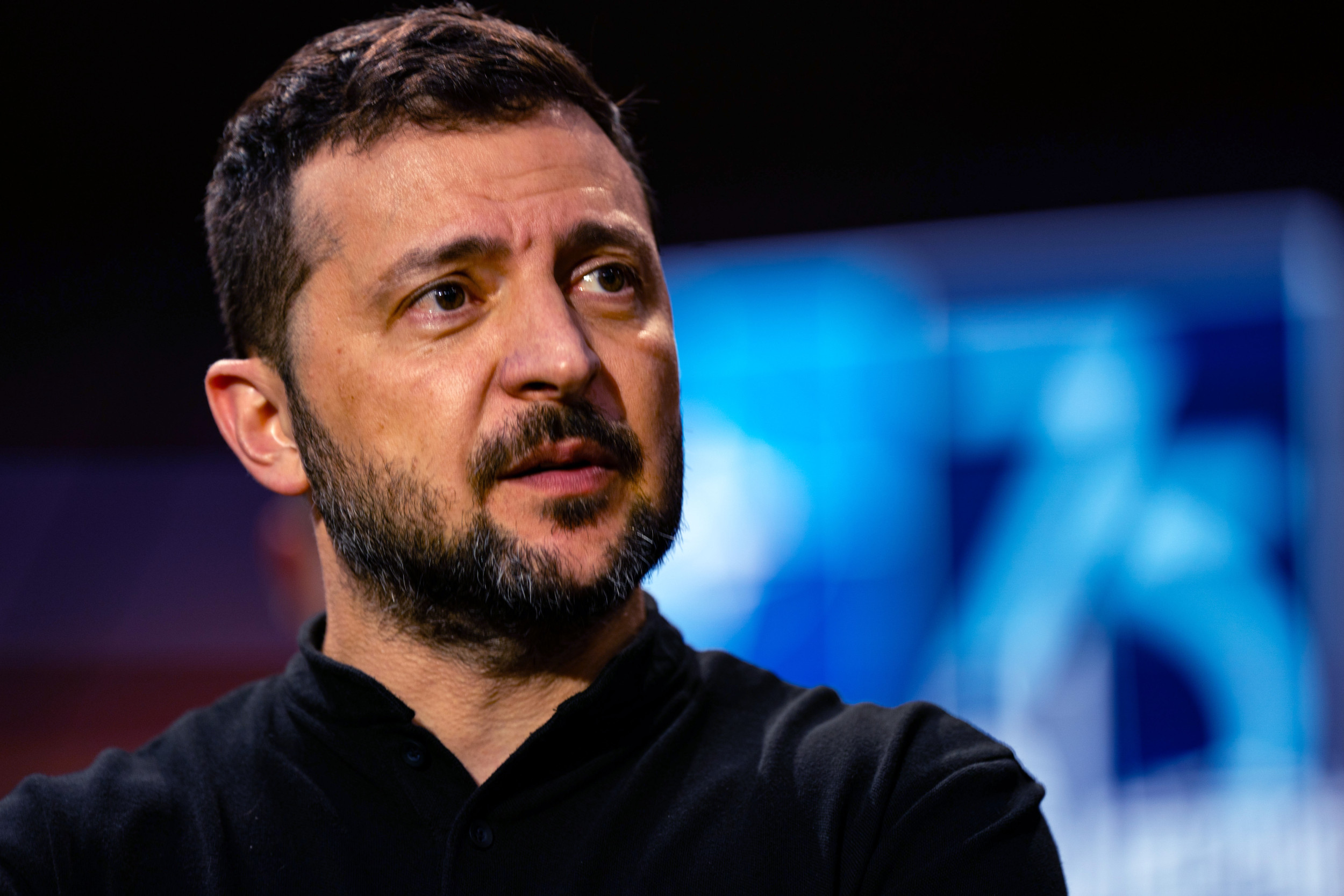Ukrainian President Volodymyr Zelensky accused Russian forces of deliberately starting a fire at the Zaporizhzhia Nuclear Power Plant in southern Ukraine on Sunday.
This incident comes amid a series of cross-border attacks and counterattacks that have intensified in recent days, raising fears of a potential nuclear disaster and drawing international attention.
Zelensky took to Telegram to share video footage showing a large plume of smoke billowing from one of the plant’s towers. While radiation levels reportedly remain normal, the Ukrainian leader blamed Moscow for using the nuclear plant “to blackmail Ukraine, and all of Europe and the world.”
The Ukrainian president called for an immediate response from the international community and the International Atomic Energy Agency (IAEA), insisting that “Russia must be responsible for this.”
The Zaporizhzhia plant, located in the city of Enerhodar, has been under Russian control since the early days of the invasion in March 2022. Its proximity to the front lines and repeated shelling in the surrounding area have made it a focal point of concern for nuclear watchdogs and Western governments alike.
This latest incident at Zaporizhzhia comes against a backdrop of increasing cross-border hostilities. In a significant development, Zelensky acknowledged on Saturday that Ukrainian forces were engaged in “actions to push the war out into the aggressor’s territory.” This marks the first official confirmation of Ukraine’s surprise incursion into Russia’s Kursk region last week—the most substantial push into Russian territory since the start of the full-scale war nearly two and a half years ago.
According to Russia’s Defense Ministry, Ukraine launched a series of drone and missile attacks on several Russian border regions overnight. Moscow claims its air defenses destroyed 14 drones and four Tochka-U tactical missiles over the Kursk region, as well as 16 drones over Voronezh and three uncrewed aerial vehicles (UAVs) over Belgorod. Additional drones were reportedly shot down over the Bryansk and Oryol regions.
The human toll of these exchanges is mounting. In Kursk, a downed Ukrainian missile struck a multistory building, injuring 13 people, according to acting regional governor Alexei Smirov. Russian Health Minister Mikhail Murashko reported that 69 people injured in shelling on the Kursk region were receiving hospital treatment.
As tensions escalate, Moscow has begun evacuating residents from border areas, with the Emergency Situations Ministry reporting that more than 76,000 people have been relocated so far. Russia has also imposed additional security measures in Kursk, Belgorod, and Bryansk as part of a “counterterrorism” operation.
The U.S.-based Institute for the Study of War (ISW) noted on Saturday that while Ukrainian forces have advanced up to approximately 13 miles into the Kursk region, the rate of confirmed gains has slowed following Moscow’s deployment of reinforcements to the area.
Amidst this broader context of cross-border hostilities, the incident at the Zaporizhzhia Nuclear Power Plant takes on added significance. Associated Press reports Yevhen Yevtushenko, head of the Ukrainian-controlled military administration in the nearby Nikopol district, provided additional details about the alleged provocation. According to Yevtushenko, unofficial reports suggest Russian forces set fire to a large number of automobile tires in the plant’s cooling towers.
Yevtushenko characterized the incident as a possible provocation or attempt to create panic, while reassuring the public that the plant continues to operate as normally as possible under occupation conditions.
Russian officials offered a conflicting narrative. Yevgeniy Balitsky, the Russian-appointed administrator for occupied parts of Zaporizhzhia, reportedly claimed the fire resulted from Ukrainian shelling of Enerhodar. Balitsky insisted there was no radiation threat to either the nuclear plant or the city.
The Russian Foreign Ministry, through spokesperson Maria Zakharova, reportedly accused Ukraine of “nuclear terror” while calling on the IAEA for a clear response.
As tensions flared, the IAEA issued a statement on X, formerly Twitter, Sunday evening. “IAEA experts witnessed strong dark smoke coming from ZNPP’s northern area following multiple explosions heard in the evening,” the agency reported.
IAEA experts witnessed strong dark smoke coming from ZNPP’s northern area following multiple explosions heard in the evening. Team was told by ZNPP of an alleged drone attack today on one of the cooling towers located at the site. No impact has been reported for nuclear safety. pic.twitter.com/pZ0VGRZtbf
— IAEA – International Atomic Energy Agency ⚛️ (@iaeaorg) August 11, 2024
“Team was told by ZNPP of an alleged drone attack today on one of the cooling towers located at the site. No impact has been reported for nuclear safety.”
